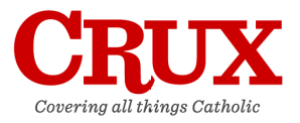
Kingsbury, as McGrory notes below, is a Pulitzer Prize-winning editorial writer and has more recently been editing the Ideas section. I think it’s significant that what she can bring to digital is seen as more urgent than her more traditional work as a writer and editor. Globe print subscribers might also remember that last winter, during the paper’s home-delivery fiasco, Kingsbury was a constant presence on Twitter, where she helped to solve problems and in a few cases delivered papers to customers’ doorsteps.
As always, these memos don’t just magically appear in my inbox. I depend on leaks—and leakers. That means you.
The text of McGrory’s email to the staff follows.
I’m delighted to announce some key personnel moves in the newsroom.
First, Katie Kingsbury will take the role of managing editor, digital.
You know we’re a great news organization when a transformative figure like David Skok can leave and we’re able to fill the void from our own midst with a Pulitzer Prize winning editor of uncommon intellect and unparalleled commitment. Katie is her own weather system, someone who isn’t only a learned digital journalist, but also an entirely natural one. Digital isn’t an added element with Katie; it’s what she does—and always has done. Look no further than her work on Ideas, and her role propelling opinion journalism to the forefront of bostonglobe.com. Linger, especially, on some of the projects she’s helped oversee, particularly our exquisite Make It Stop wraparound and digital presentation that owned the web for the better part of a week. That project would never have happened as it did without Katie driving it forward.
Katie is, at her core, a storyteller, though with a digital soul and spine. She’s spent the better part of her career as a reporter—with Metro in Boston, then with Time in Asia and New York. She arrived in our room in 2013, another smart Peter Canellos hire, as a freelance editorial writer. It took her, what, less that two years to pen that utterly extraordinary series on the plight of fast food workers that earned her the previously mentioned Pulitzer Prize for editorial writing in 2015. Katie became the Sunday op-ed editor in 2014, and then Ideas editor in 2015. There’s been nothing but unabashed success at every turn.
There’s also a book contract, and a whole lot more, making for a schedule that is virtually unimaginable, and yet it doesn’t seem to matter. Katie is a relentlessly cheerful presence, a world-class colleague who treasures ideas and creativity and seems to have been put on this earth to challenge the status quo.
Katie will start in her new role very soon, and by that I mean whenever she can work out a smooth transition from Ideas with Ellen [Clegg] and her successor.
Second, Jason Tuohey will become the deputy managing editor for audience engagement.
At one level, it’s accurate to say that Jason may be the steadiest human being on the planet, quietly driving bostonglobe.com forward for years such that it’s the single most successful aspect of our entire enterprise, up 20 percent in uniques year over year, topping the 70,000 paid subscriber mark earlier this month, an uncommonly accessible site that always seems to strike just the right note at just the right time.
But even that somehow sells Jason short, because he’s far more than steady. Behind that unflappable demeanor is a brilliant editor and beloved manager who knows the exact levers to push and pull with staff to keep the site humming with readers. There’s nobody in the industry I’ve looked to more for counsel on all things digital, and Jason is always dead on the mark.
In this new role, Jason will continue to have oversight of globe.com. In addition, he’ll be charged with connecting our journalism with the community and larger world in ways that we currently don’t do enough of. He will do outreach. He will also guide the room, with an appropriate emphasis on metrics, as to what works and what doesn’t—topics, tones, times of day, platforms, and so much more. Ideally, sooner rather than later, Jason will have his own team of audience development specialists, and will work with a larger team across the building.
Jason will start in his new role on October 17.
Third, Heather Hopp-Bruce will become design director. Heather is the outrageously talented designer of editorial and Ideas, constantly pushing industry boundaries with provocative sections fronts and projects that have earned her a stunning 11 SND [Society for News Design] awards in the past two years. Think of Heather as an activist designer, not only there at the inception of a piece or project, but immediately helping to shape it, probing and prodding it, and thinking across all platforms. Design, in her view, is a partner, something that comes through week after week, time and again, in her work in Ideas. Her sprawling intellect and boundless energy leads her in many directions. Surfing? She’s rabid, as well as talented. Marksmanship? A champion back in grade school—really. Heather swam across Boston Harbor a couple of years ago and still talks about all the little jelly fish that made it feel like pudding.
None of it got in the way of what has been an extraordinary career as a designer and writer, one that has brought Heather from Montana to San Francisco to Santa Cruz to Seattle, and then to Newsday. She was another brilliant Dan Zedek hire in 2010. She took some time away from journalism to work at a web design firm in Santa Cruz, though in her words, “I realized I could never be happy outside of a newsroom.”
Heather, too, checks off the box of world class colleague. She’ll start in her new role in early November.
Fourth, Lauren Shea has become a dedicated product manager for the newsroom, working hand in hand with our entire editorial team.
Lauren joined the Globe in June of 2014 and she has left an indelible mark on everything that you read and experience on Globe.com ever since. As the head of product for the Globe, Lauren was a driving force in modernizing the look and feel of our website, along with building out new digital advertising products and refining our meter to improve our efforts at more subscriptions. This was on top of her work launching Crux, BetaBoston, and Sports 2.0. Put another way: Lauren gets stuff done.
She now brings her talent solely into the storytelling realm. Along with elevating our special projects, Lauren will identify and build new products that allow us to tell everyday stories in new ways on all platforms. In her prior roles, including at Arnold Worldwide, Lauren has managed digital strategy, user experience/site architecture, visual design, end-to-end software development, and quality assurance testing. And yes, she’s a generous colleague beloved by everyone fortunate enough to work with her.
Again, the very fact that we have a roster like this ready to lead the newsroom ever more into the digital era is a tribute to us all.
Many thanks,
Brian



